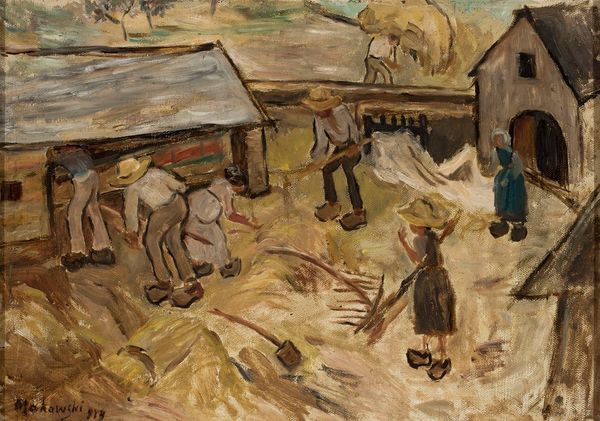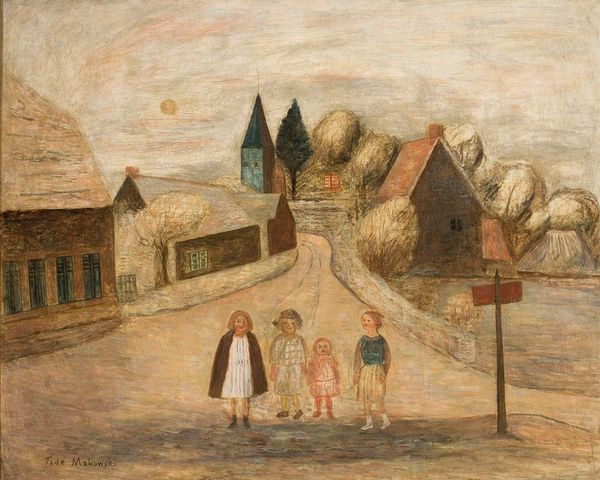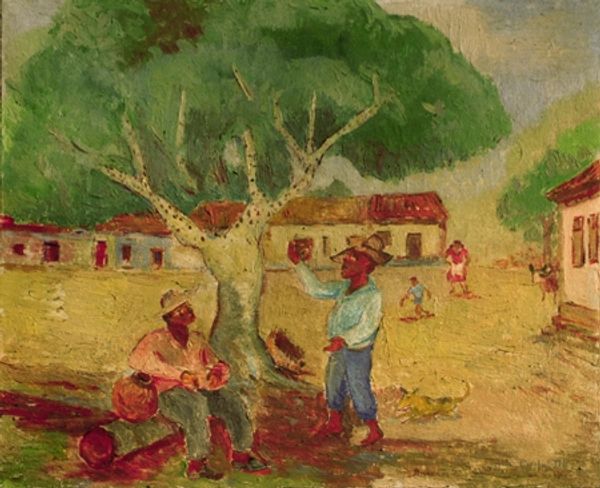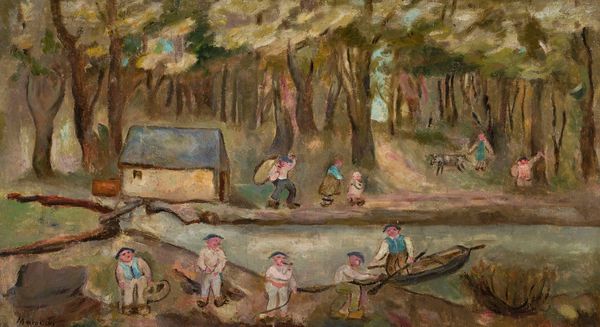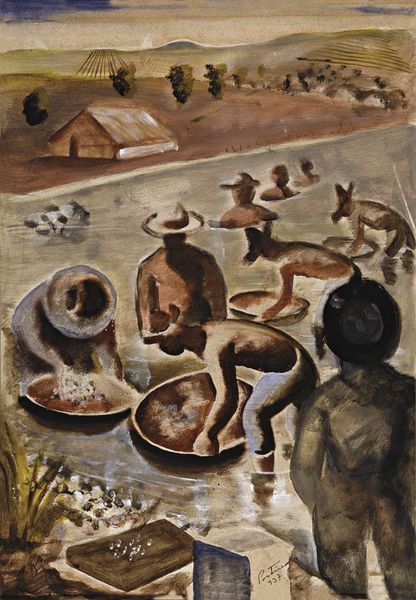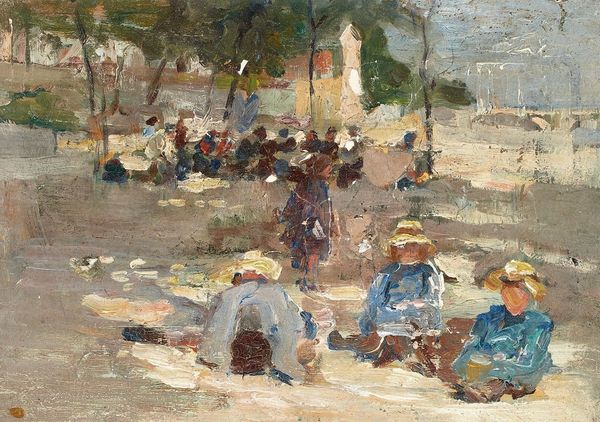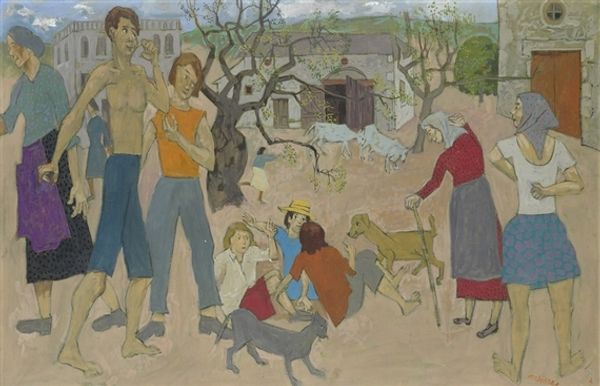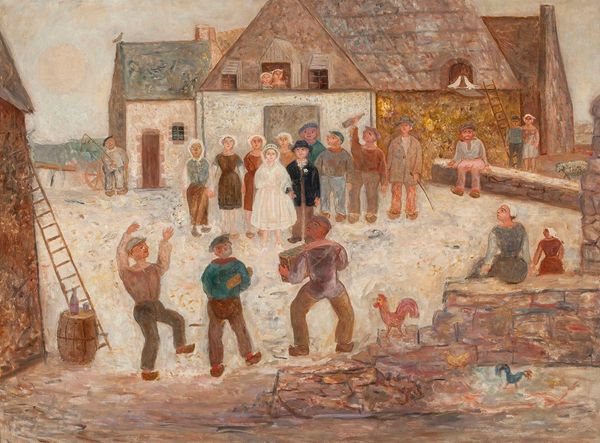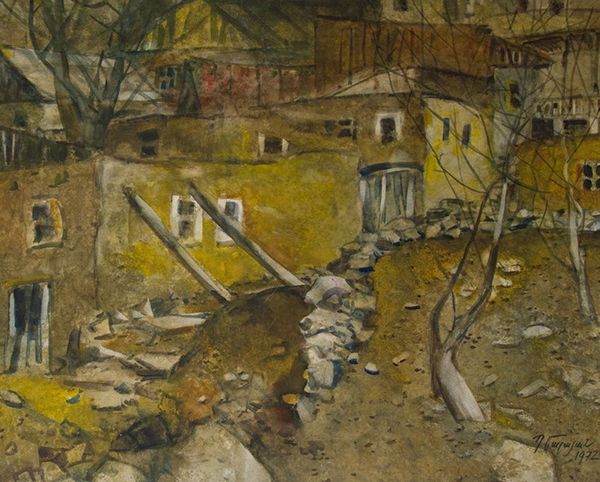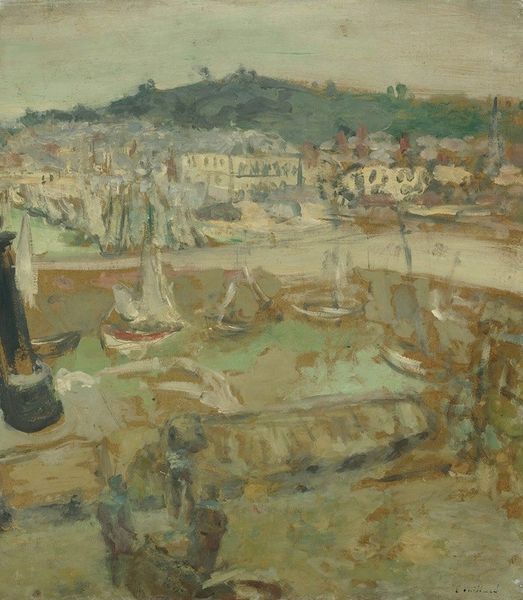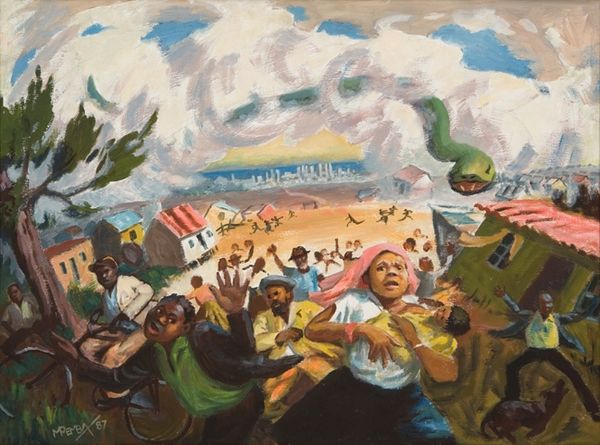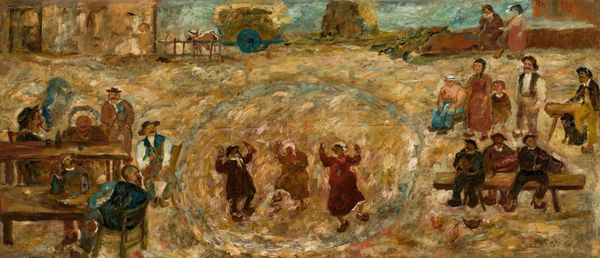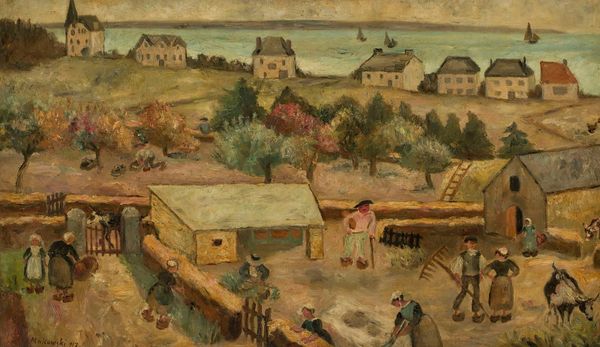
painting, oil-paint
#
painting
#
oil-paint
#
landscape
#
figuration
#
oil painting
#
group-portraits
#
genre-painting
#
modernism
Copyright: Candido Portinari,Fair Use
Curator: Candido Portinari’s "Roundelay," completed in 1932, shows children at play, captured in oil paint with a distinctly modern touch. It is a painting full of symbols worth exploring! Editor: The initial impression I get is that it is gritty. The limited palette of earth tones, almost muddy, makes it feel…grounded. But something about this "roundelay" suggests instability in its materiality, perhaps because the texture looks dry, thin? Curator: Yes, that’s a fascinating reading, given that the circle is often seen as a potent symbol. Circularity represents wholeness, unity, and the eternal return in many cultures. Here, the children’s game transforms the village square into a symbolic arena. Editor: But this particular depiction subverts any sense of a "pure" circle. The earthy pigments betray any desire for ethereal perfection. One must be attuned to his materiality; for instance, what kind of brushstrokes did Portinari favor? Were they intentionally rough to evoke this texture, the very reality of play? And where did the pigment come from, where were these materials purchased? Curator: Perhaps that earthiness is precisely the point – childhood rooted in the land, reflecting the specific social realities of Brazil at that time? Even their clothing speaks volumes, and their hand-holding suggests togetherness amidst social disparities, for the racial diversity is evident here. Editor: Agreed. One cannot divorce form from production. How the pigment adheres to the canvas informs us greatly: is it flaky? Impasto? It helps reveal labor itself. This is where social context emerges: The roughness and texture may speak volumes about poverty and resourcefulness... Curator: I concur. This work serves as a cultural artifact—a piece that enables collective memories to remain potent through this visual representation of a game played over the passage of time. But also Portinari’s genius lets this simple childhood image reverberate with multiple, even deeper layers of interpretation. Editor: Ultimately, the artist is inviting us not just to see the final product but to question how its very means of creation – its dirt, its texture – connects to the social fabric. I leave here wanting to examine the work physically with my own hands.
Comments
No comments
Be the first to comment and join the conversation on the ultimate creative platform.
